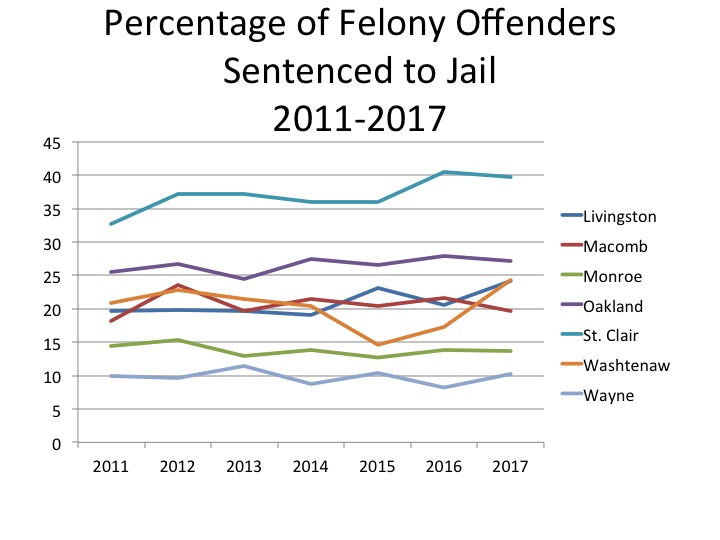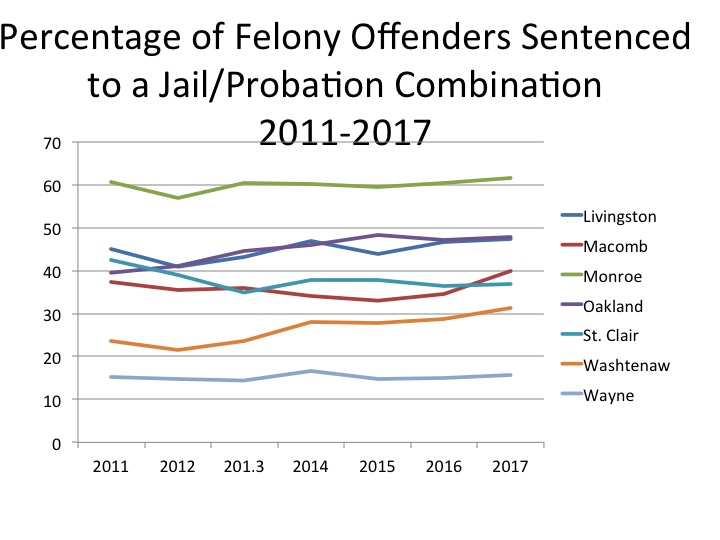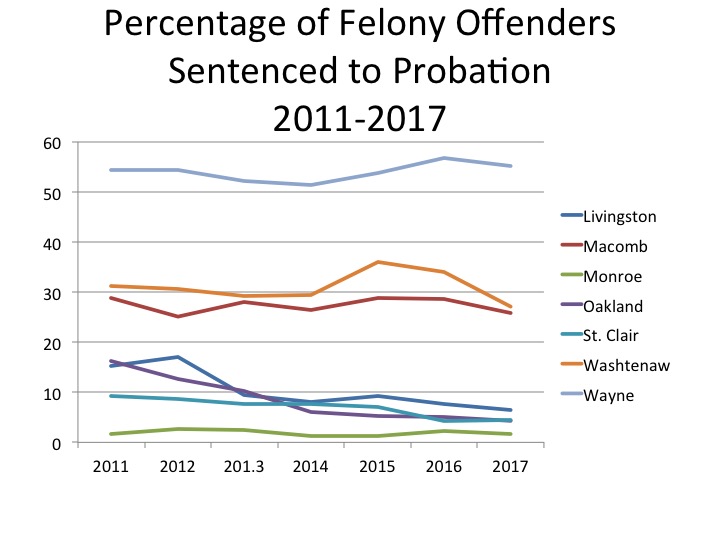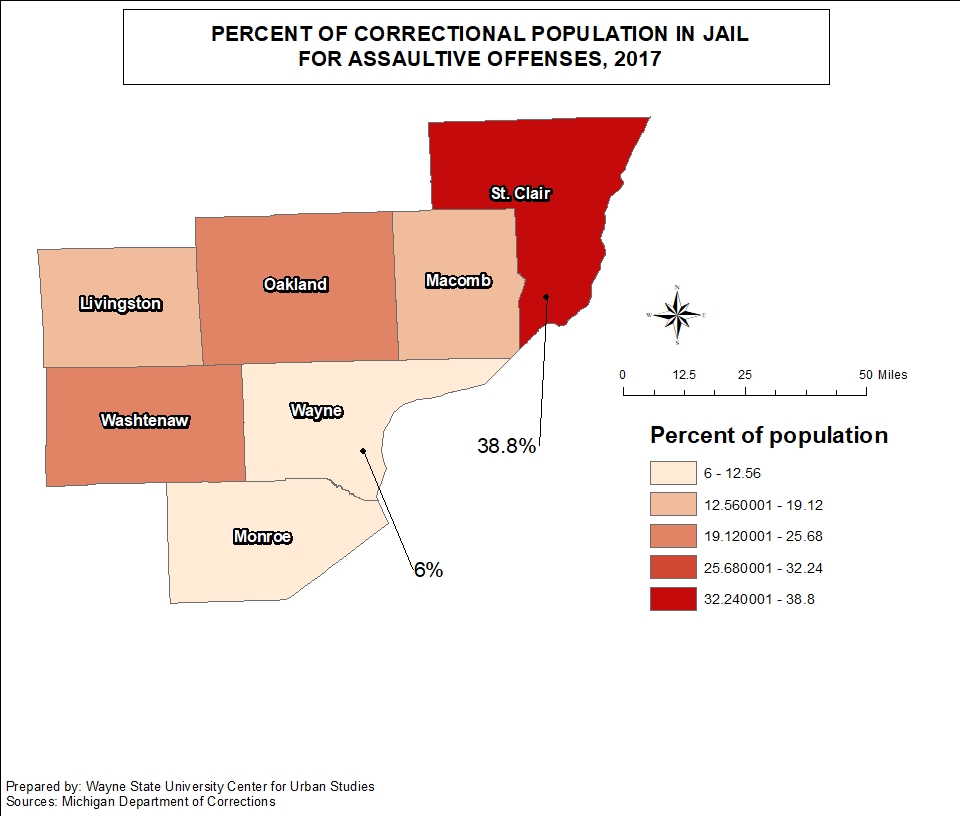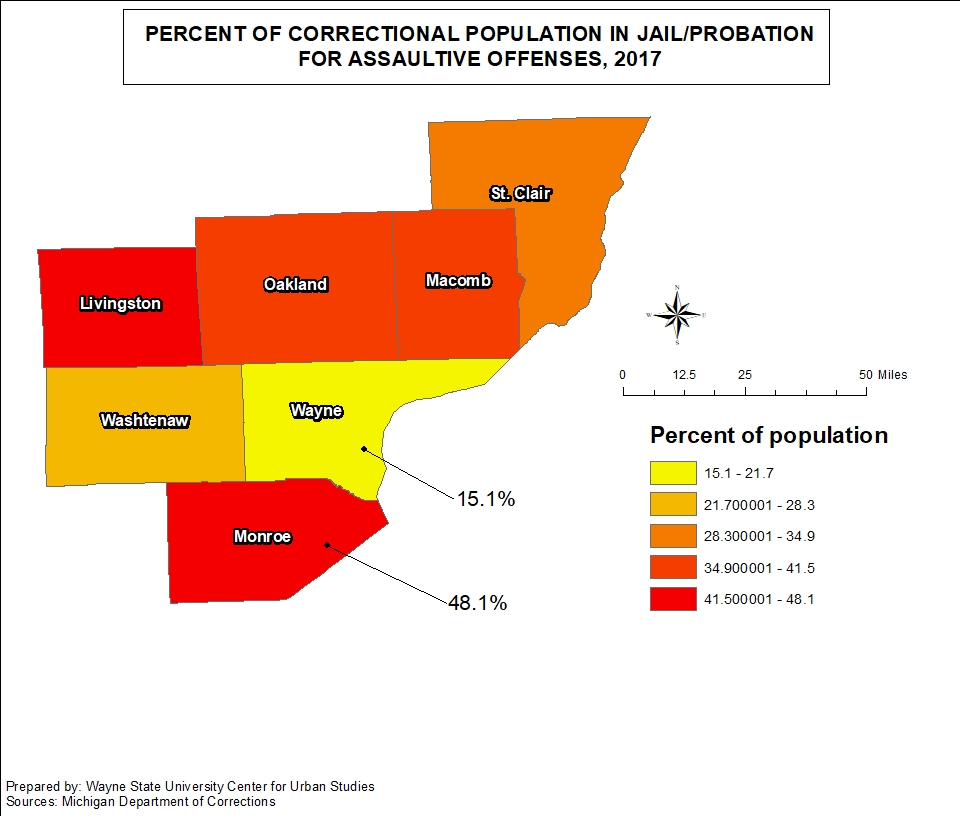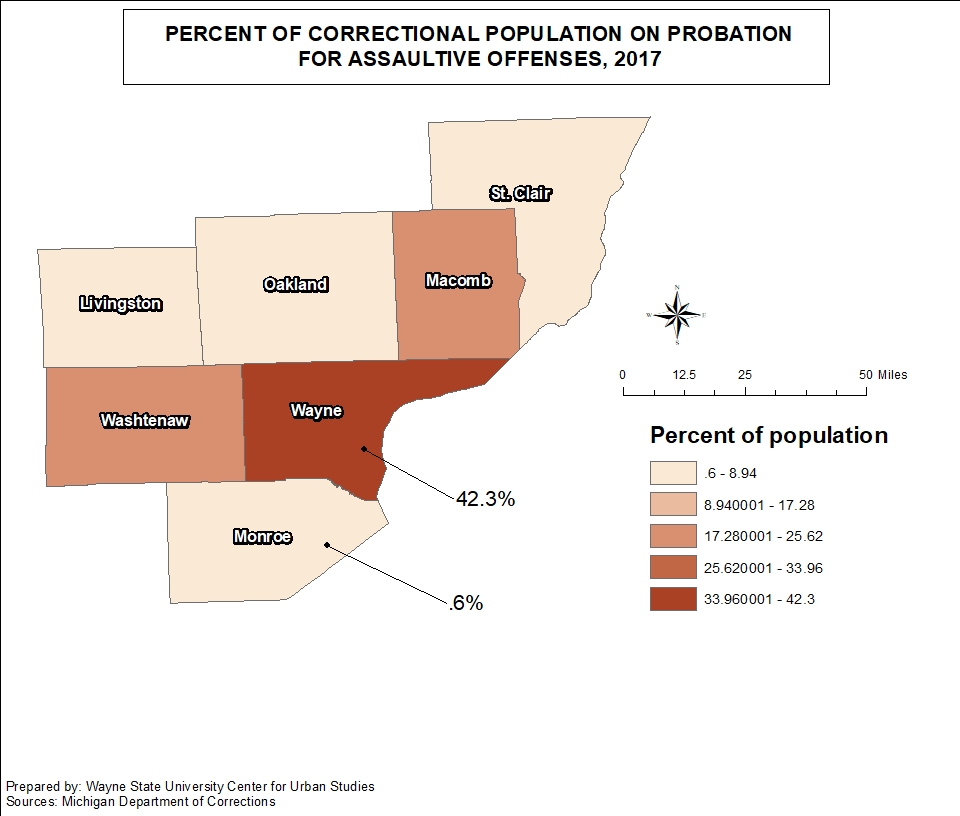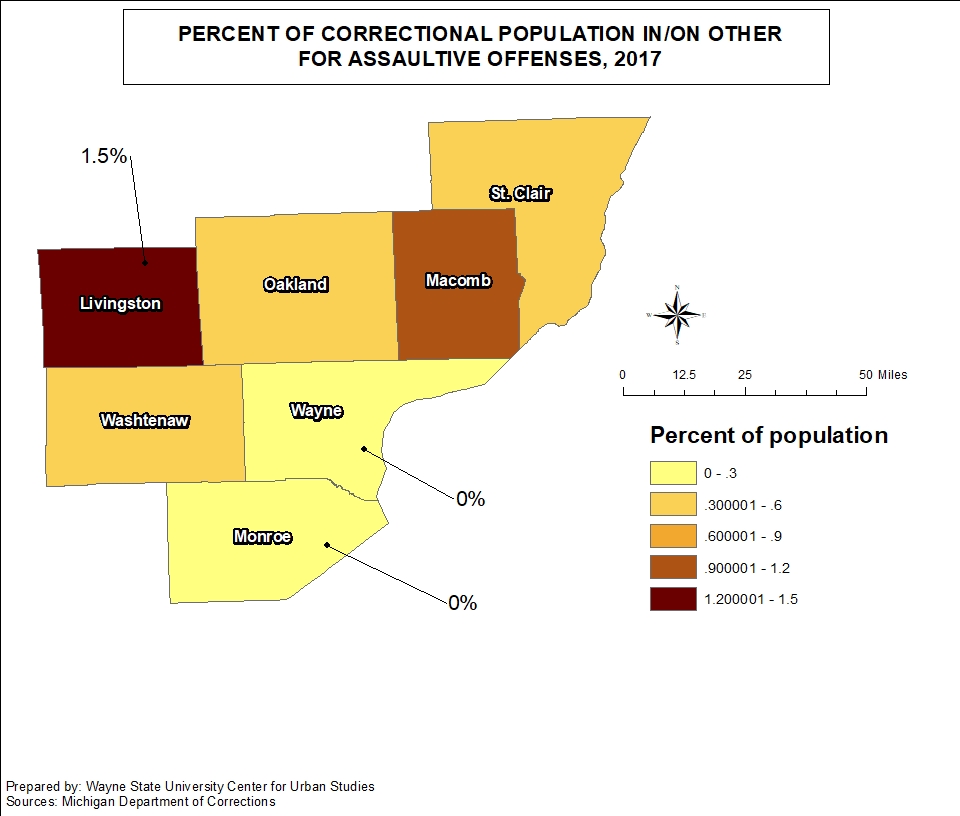In Michigan there is a teacher shortage and often times long-term substitute teachers are seen as at least a temporary fix to the problem. The individuals who fill these positions are not required to have an education background and can end up leading a classroom for a full year, or more. According to data from the Michigan Department of Education, the number of long-term substitutes in Michigan schools has increased from 213 during the 2012-13 academic year to 2,538 for the 2018-19 year. For this post we explore the percentage of teachers that were long-term substitutes in the Southeastern Michigan school districts for the 2018-19 academic year; charter schools are not included.
At first glance, the map shows that majority of the districts in the seven county region had less than 2.5 percent of the teacher population at each district serving as long-term substitute teachers. In Washtenaw, St. Clair and Monroe counties not one of the public school districts had more than 2.5 percent of the teacher population made up of long-term substitutes. The county with the highest number of public school districts with higher percentages of long-term substitute teachers was Wayne County. In Wayne County, and regionally, South Redford School District had the highest percentage of long-term substitutes at 13.3 percent. Other districts in Wayne County with higher percentages of long-term substitute teachers were the River Rouge School District, Ecorse Public Schools and the Dearborn Heights School District. In Oakland County, the Berkley School District had 13.2 percent of its teacher population made up of long-term substitutes. According to a recent article by Bridge Magazine, school districts in areas with lower household incomes are more likely to have a higher percentage of long-term substitutes. This is also especially true for charter schools, which were not examined in this post but will be at a later time. Bridge Magazine’s analysis states that charter school students are four times more likely to have a long-term substitute as a teacher than a student in a traditional public school. Additionally, according to the article, low academic performing school districts are more than three times as likely to have long-term substitutes instead of certified teachers.
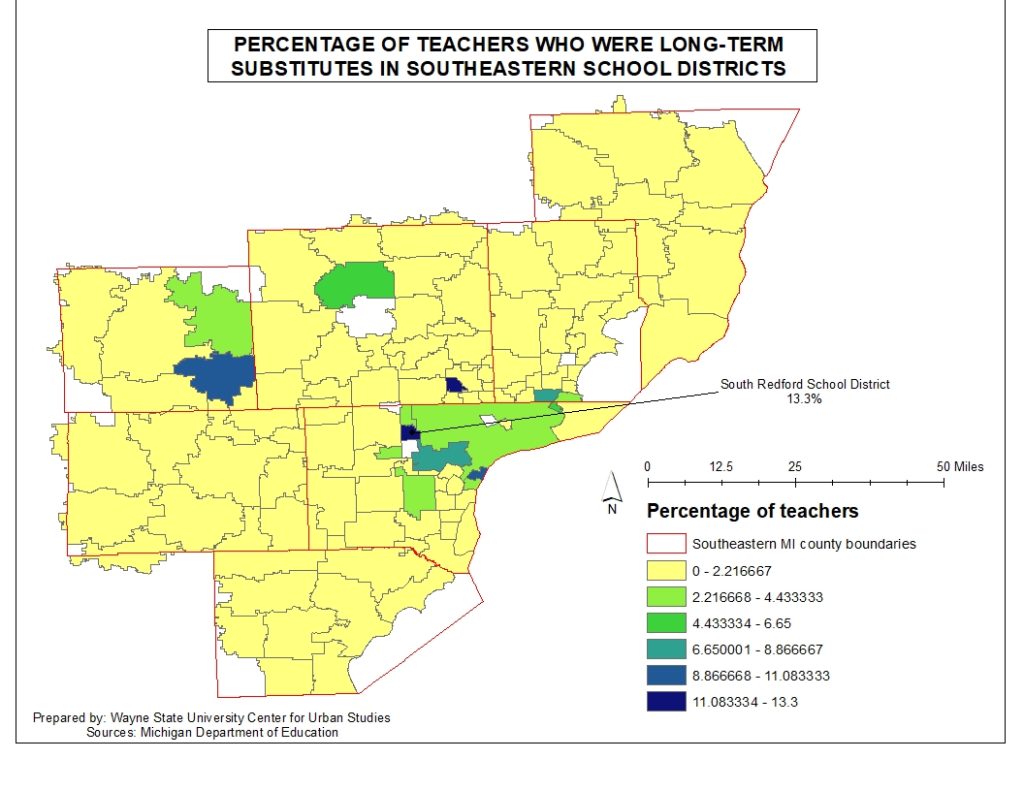
While this post highlights how in some areas of the Southeastern Michigan, and in the state, there is a shortage of certified teachers, additional information reveals that there are overall personnel shortages in school districts. From teachers to speech pathologists to adult education teachers, the State of Michigan has posted critical shortage openings for retirees to re-apply to so the positions can be filled. The list can be found here. That information, coupled with the long-term substitute data, further shows that education in Michigan is in need of assistance. With a critical need for teachers, at least in part due to stagnant and/or declining salaries, and overall lack of funding for education changes need to happen to ensure the students of Michigan are receiving the education they need and deserve.

